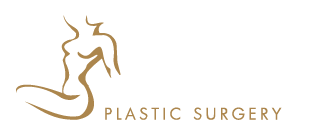
COSMETIC FACIAL PLASTIC SURGERY
RHINOPLASTY
Rhinoplasty is one of the most common procedures which men and women resort to. It is considered especially efficient as it corrects both the anatomical and functional problem of the person that undergoes the procedure. The combination reshaping the nose with a diaphragm correction surgery can effectively address some breathing problems, like those created by a deviated (crooked) septum. The operation of rhinoplasty is performed to restore the shape of the nose in harmony with the rest of the face, improving the general appearance of the face.
This operation requires a clear knowledge and respect to the treatment of the individual infrastructure that forms it (bone, cartilage, skin and mucous membranes). It is performed with general anesthesia, and thanks to modern drugs and correct handling, the process is relatively painless, which surprises those who engage in it.
Basic surgical techniques in rhinoplasty include: closed, open, and nasal tip rhinoplasty.
Closed rhinoplasty
The technique of closed rhinoplasty is preferred when the individual patient problem lies in the back of the nose and the nasal tip requires little correction. The incisions of this technique are done inside the nostrils and are subtle.
Open rhinoplasty
The method of open rhinoplasty allows greater flexibility and surgical precision and this is why it is used in cases that require detailed correction of the nasal tip (ie when the tip of the nose is asymmetrical, oversized etc.), when there is a serious traumatic injury of the nasal skeleton (eg . after accident). Additionally for making a reoperation to correct problems after a previous rhinoplasty and in cases of congenital abnormalities. In open rhinoplasty, apart from small imperceptible incisions inside the nostrils, a small invisible intersection in-between is also performed. There is a wide range of grafts-- the diaphragm, the cartilaginous portion of the ear, the side of the chest wall, the area of the scalp, which can be used by the surgeon to provide a solution for the most demanding and difficult recovery issue.
Plastic surgeon George Samouris in collaboration with the HOSPITAL GROUP in London, explains that in open rhinoplasty lies the fact that we intervene only when it is necessary, where appropriate, removing or adding material depending on the problem and the specific characteristics of each individual. Therefore we can now, with the method of open rhinoplasty, execute with precision the most demanding rhinoplasty surgery, both aesthetic and reconstructive, and have better and more accurate results."
Nasal tip plastic surgery
Only if the nasal tip aesthetically annoying, it can be corrected by the method of classical rhinoplasty or open rhinoplasty. Large nostrils may reduce in aesthetically acceptable limits as very small incisions on the sides of the nostrils are performed.
Necessary Conditions for rhinoplasty surgery:
Facial development has to be complete
Be generally healthy
Have stopped smoking (mainly for a long time prior surgery)
Be 16 years or above
The doctor will guide you whether rhinoplasty is the right treatment for you, after an extensive evaluation of the structure of the nose, your medical history, and your overall health.
After the surgery of rhinoplasty:
The patient leaves the hospital having a splint in the nose area.
Nose swabs are placed, which remain in place for 48 hours, while the splint is removed after 10 days.
Within 2 to 4 weeks, the majority of facial bruising and swelling subsides.
The patient can return to his daily activities after three days. External sutures (if any) will be removed in 5 to 7 days.
The first visible results will appear after three months and the final result will set in 12 to 14 months.
Postoperatively, there will be a temporary bleeding and decrease in the sense of smell, as a result of this surgery which are problems that usually do not last long.
The result of a rhinoplasty is permanent.
What should we know about Rhinoplasty?
After the surgery, there is a possibility we will be unable to breathe through your nose for at least 24 hours.
For a short time after rhinoplasty, patients may experience a pain sensation in the nose, swelling and bruising, mild headache, bleeding or stuffiness.





